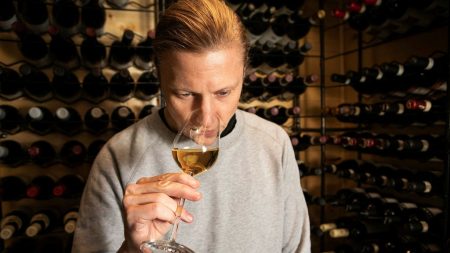Vinskolan del 114 explores the concept of ”terroir,” a French term encompassing the natural environment, winemaking traditions, and cultural influences that shape a wine’s distinctive character. It asserts that high-quality wines often possess a clear sense of place, expressed through their aromas and flavors. The episode features Alf Tumble, a wine expert, who delves into the significance of origin and offers insights into typical wines from various regions, emphasizing how the interplay of geographical factors, winemaking techniques, and local culture contribute to the unique identity of each wine.
Terroir, a concept central to understanding wine, encompasses the totality of environmental factors influencing grape cultivation and wine production. This includes climate, soil composition, topography, altitude, and even the presence of surrounding vegetation. These elements collectively shape the grapes’ physiological development, affecting their sugar content, acidity, and aromatic compounds, which ultimately translate into the wine’s sensory profile. Climate plays a crucial role, dictating the amount of sunlight and rainfall the vines receive, impacting ripening and overall fruit quality. Soil composition influences drainage, water retention, and nutrient availability, further contributing to the grape’s character. The slope of the vineyard and its altitude also affect sunlight exposure and temperature variations, creating microclimates that can significantly differentiate the flavors of wines produced even within the same region.
Human intervention, intertwined with the natural environment, also plays a significant role in shaping a wine’s character. Winemaking practices, passed down through generations, reflect the cultural heritage of a region and influence the final product. Decisions regarding grape variety selection, vineyard management, fermentation techniques, aging processes, and blending methods all contribute to a wine’s unique expression. For instance, the choice of oak barrels for aging can impart specific flavors and textures, while the duration of aging influences the wine’s complexity and development. These choices, made by winemakers in response to their specific terroir, define the wine’s style and contribute to its sense of place.
Alf Tumble, in this episode, likely guides viewers through specific examples of how terroir manifests in different wines. He might explore, for example, the crisp acidity and mineral notes characteristic of wines from Chablis, France, attributed to the region’s cool climate and Kimmeridgian soil rich in limestone and fossilized oyster shells. Conversely, he might contrast these with the rich, full-bodied wines of Bordeaux, often exhibiting dark fruit flavors and complex aromas due to the warmer climate, gravel soils, and the prominence of Cabernet Sauvignon and Merlot grapes. He might also delve into the nuanced flavors of Pinot Noir from Burgundy, highlighting how subtle variations in terroir within this relatively small region can lead to dramatically different wine styles.
Furthermore, Tumble likely emphasizes the importance of recognizing these regional variations and understanding how they contribute to the overall enjoyment of wine. He might provide practical tips on how to identify these characteristics through sensory evaluation, encouraging viewers to pay attention to the wine’s color, aroma, and flavor profile. He might suggest looking for specific descriptors that often indicate a wine’s origin, such as the flinty minerality of Chablis or the black currant notes of Cabernet Sauvignon from the Médoc region of Bordeaux. By recognizing these regional characteristics, wine enthusiasts can appreciate the subtle nuances and complexity that terroir brings to each bottle.
Ultimately, Vinskolan del 114, through Alf Tumble’s expertise, underscores the significance of terroir in defining a wine’s identity. It highlights how the intricate interplay of natural environment, human intervention, and cultural heritage contributes to the diversity and complexity of the wine world. By understanding the concept of terroir, wine enthusiasts can gain a deeper appreciation for the distinct characteristics of wines from different regions and enhance their overall wine tasting experience. The episode serves as an educational tool, empowering viewers to explore the fascinating world of wine with a greater understanding of the factors that contribute to its rich tapestry of flavors and aromas.














